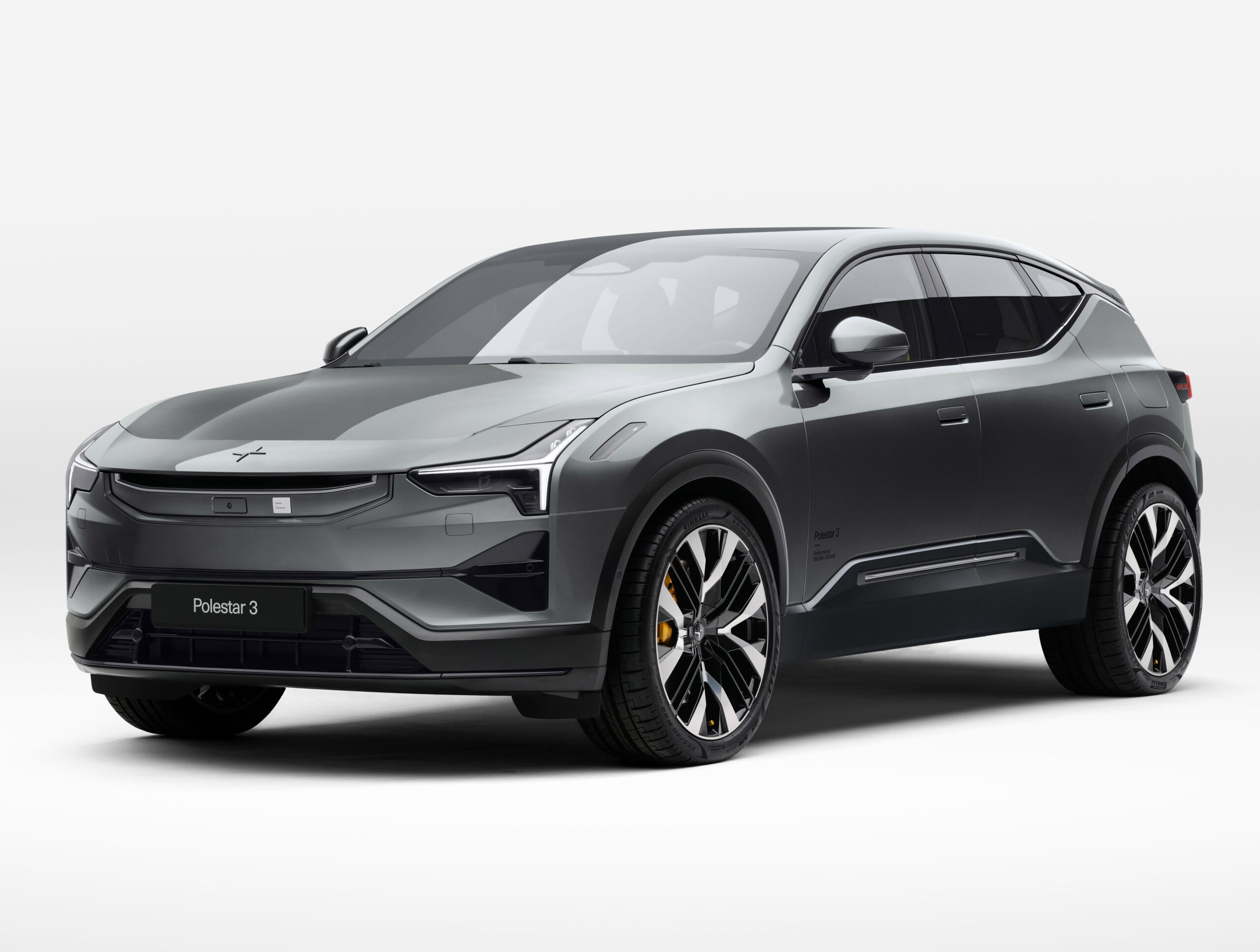

The latest mid-size truck from General Motors, the 2023 Chevy Colorado, takes more simplified approach at providing a value-packed and attractive work truck for the masses. With three trim levels starting below $40,000 and one engine option that fills the void left by the previous truck’s three, there is a lot to like about what Chevy has done here. As long as you are okay trading V6 sound with better performance and towing, this is definitely the new benchmark in the class. Word is still out on fuel economy gains, but let’s go over everything else we can share about this completely redesigned truck.
Instead of borrowing a design from international Chevy trucks, the 2023 Colorado (and its twin the upcoming GMC Canyon) was designed for the U.S. with a boxier and more rugged look this time around. The differentiation between the five trim levels is palpable, with unique grilles and bumper treatments. The Work Truck (WT) and Trail Boss are parallel in the hierarchy, with the latter featuring off-road upgrades without the Z71’s price. Thus, black bumpers, halogen headlights and, on the WT, steel wheels. The wheels now use six lug nuts, meaning you could swap in Silverado or Sierra wheels onto the Colorado/Canyon if you wanted. The LT and Z71 introduce LED headlights and body-color bumpers. The ZR2 is the king of the hill, with a unique grille and restructured rear suspension setup (shocks on the outside of the frame instead of the inside, for example). Ride height falls in the 8-11 inch range depending on the trim.

In an effort to simplify ordering and appeal to the bulk of this market, only one cab and bed length will be available going forward: double cab with a medium bed. Only the Toyota Tacoma and Nissan Frontier still offer an extended cab and multiple bed lengths, but don’t be surprised if the upcoming 2024 Tacoma goes the one-and-done route, too. Overall, though, this is a handsome update that should appeal more to the broader truck-buying market in America. Quirky details and neat storage features like a water-tight cubby integrated into the tailgate make this a little more interesting than the current competition. Until RAM brings back the Dakota and gives it the infamous RAM Box storage spaces, the Colorado’s bed will be the coolest in the segment.
Inside is where the most welcome changes were made. The dashboard is far more modern and attractive than the blah look of the previous generation. It comes standard with some nice amenities, too, such as an 8″ digital instrument cluster and an 11″ infotainment system powered by Android Automotive. Yes, even the Work Truck gets these features. The WT and Trail Boss share interiors, albeit with some minor material color and trim differences, while the LT and Z71 upgrade the trimmings and add more features and optional heated and ventilate leather seats. The ZR2 comes with a larger 11″ digital instrument cluster and unique leather seat patterns. The main takeaway is that Chevy has given you a lot for the money at the low end, leaving us feeling perfectly comfortable sticking with the lower trims. It is more difficult to upgrade interior bits and infotainment software than changing exterior lighting to LED or painting bumpers body-colored.

One interesting twist is that Chevy has eliminated physical controls for the headlights. Instead, those are access by a shortcut button at the top left of the infotainment UI. In close proximity to that and the driver is a physical volume knob. This is still a truck focused on customers who prefer functionality over hyper-techno touch-capacitive nannies, and we appreciate that. You’ll still find toggle switches and a traditional gear shifter, among other things. We did not get to sample the interior of the top dog ZR2, but even the lower four trims prove to have the best cabins in the segment, bar none.
This year, Chevy has consolidated the Colorado’s engine lineup down to just one option. It’s the 2.7L turbocharged 4-cylinder from the Silverado, and unlike other past and potentially upcoming turbo-4’s in the competition, this one was developed directly for truck duty. It also has all of the attributes of each of the three engines it replaces: better (projected) fuel economy than the previous naturally-aspirated 4, more horsepower than the V6, and more torque than the diesel. Customers of the Silverado with this power plant complained that it didn’t sound ‘truck’ enough, and while they say measures were made to address this, we didn’t find it to sound less like the 4-cylinder that it is.
In base form, the engine lacks a few elements of the middle- and high-output versions. Thus, it only produces 237 horsepower an 259 lb.-ft. of torque. The ‘Turbo Plus’ version makes 310 horsepower and 390 lb.-ft. of torque, while the ‘High Output’ version bumps the torque figure to 430 lb.-ft. Delightfully, Chevy makes the ‘Plus’ version available on the base WT trim AND makes the ECU reset that turns into the ‘High Output’ version available on all trucks equipped with that mid-tier version. So, if you want the base truck with 310 horsepower and 430 lb.-ft. of torque, it can be yours! That tune is standard on the ZR2 trim, as is 4WD. WT and LT are available with RWD, if you don’t need four-wheel power.
The 2.7L turbo is a pretty peppy powertrain, more so here than in the larger Silverado thanks to the lower curb weight. We only got to drive the mid-level tune with 310 horsepower and 390 lb.-ft. of torque, but came away feeling that this was the perfect powertrain for this truck. Expect around seven seconds for 0-60 mph, though we weren’t able to test that out fully at the event. The base tune with only 237 horsepower will likely feel a bit slower than what we drove or the V6 Nissan Frontier and turbocharged Ford Ranger, but definitely quicker than the base 2.7L naturally-aspirated 4-cylinder in the Tacoma (yes, they still offer it). It may not sound like a big deal to have 2.7 liters to work with instead of 2.3 or 2.4, but this definitely felt like it had significantly more engine braking than the Ford Ranger. If you do plan on towing the maximum 7,700 pounds in your Colorado, you should definitely keep in mind that it’s going to be harder to control that extra weight going downhill.
As far as ride and handling go, it is a little bit difficult to talk about them because it was both really windy and really rainy in Southern California where we were driving, but we were able to gather that the Colorado definitely has a solid and sorted ride quality. It doesn’t ride like a car like the Honda Ridgeline does, so don’t expect those kinds of dynamics. Out on winding mountain roads, you’ll certainly notice the solid axle in the rear. The independent front suspension is pretty well sorted and well-behaved, but you will notice some wheel hop hop over broken pavement in the corners here and there. Nevertheless, the Colorado feels more refined and more modern than a Toyota Tacoma. Now, that’s obviously not too hard because the Tacoma is far from modern.
We averaged almost 20 miles per gallon in a Trail Boss model driving up to 3,500 feet of elevation from sea level. Note that the Colorado is substantially similar in size to the average half-ton truck because dimensionally and aerodynamics-wise, it’s only a little bit narrower inside but almost as high off the ground. At the moment, the most fuel-efficient option in the segment is something like the Jeep Gladiator diesel. You have to pay a lot for that diesel, though. Until the rumored Hybrid Max-powered Tacoma arrives later this year, the base tune of the Colorado is still going to be one of the most efficient options in the segment.
The cabin of the Trail Boss and Z71 models we drove seemed to be a little bit quieter than average. On the other hand, there was a noticeable amount of engine grumble coming into the cabin. Even at lower RPMs, you could definitely hear how the 2.7 sounds a bit gruffer here than it does in the Silverado. Chevy claims that some Silverado owners thought the engine needed to sound more truck-like. Their efforts to remedy that didn’t go too far, as it still sounds like a large 4-cylinder engine when you floor it. This is the direction that this entire segment is going in, though, and that even applies to some of the half ton trucks out there. If, however, you’re looking for the most refined option in the segment, the one that’s most focused on handling ability, daily-driver livability, quiet cabin, etc., that would be the Honda Ridgeline. Based on the previous-generation Pilot, that model certainly has its trade-offs: drivetrain smoothness, towing capability, off-road capability, etc. It’s a different kind of truck for a different kind of buyer. For the buyer of the kind of truck the Colorado is, it is certainly the best in he business now.
With pricing that puts the Tacoma and Ranger to shame, and power that should embarrass Frontier V6 drivers, the 2023 Chevy Colorado rightfully earns its place as the new benchmark in the midsize truck segment. Stay tuned for our impressions on the ZR2 trim and the GMC Canyon, but the latter should feel very similar to the Colorado. We know Canyon will differ from the Colorado by offering a few more features at the top level like a head-up display and a fancier interior. Though, at the end of the day, we might be inclined to predict that Chevy’s work has gone a little farther in terms of creating the ultimate package.
Starting at $29,200 before destination (the configurator is now live), remember that you already get the larger cab size and a turbo 4-cylinder with that WT trim. The next two trim levels all start (and can remain) below $40,000, making the comparably-priced Ranger and Tacoma look like afterthoughts. The competition isn’t resting on its laurels, though. Due this year are both the 2024 Toyota Tacoma and Ford Ranger, both of which we have pretty good idea for what to expect design-wise. But can they match the Colorado’s balance of flexibility, value, performance, and style? We will just have to wait and see.



